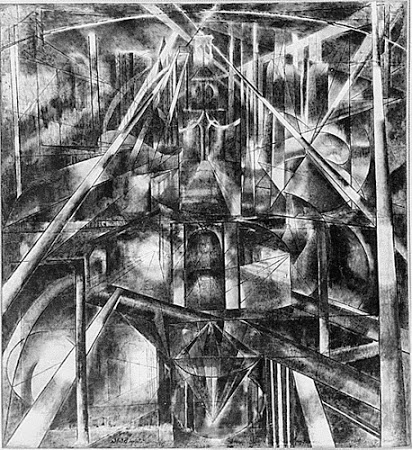Topic: Systems and Order
The Big Ideas:
A system is a structure of interacting, intercommunicating components that operate individually and jointly to achieve a common goal.
Designing is creating conceptual and visual unity by giving order to diverse but interrelated and interdependent parts.
Standards:
As an art student, I will understand and demonstrate the ability to...
Understand and apply media, techniques, and processes with skill and confidence
Use design principles and functions to accomplish specific visual art problems
Choose and evaluate subject matter and ideas
Reflect upon and assess the characteristics and merits of my work
Make connections between my art and other aspects of life
Goal Concept:
Designing is creating conceptual and visual unity by giving order to diverse but interrelated and interdependent parts.
Access Prior Knowledge:
“There is no work of art without a system.” ~ Le Corbusier
New Information:
Design Systems
A System: An organized, integrated whole made up of diverse but interrelated and interdependent parts.
In his book The Medusa and the Snail, Lewis Thomas explains the term system as “A structure of interacting, intercommunicating units or components that as a group act or operate individually and jointly to achieve a common goal through the concerted activity of the individual parts.” In other words, all systems are synergistic in that they produce an effect greater than the sum of their parts.
 Order
Order
The process of designing involves creating conceptual and visual order. Ideas are designed, as are objects such as furniture, buildings or art forms. To design is to unify, to make ordered that which otherwise would be formless or undifferentiated. The designer takes random information, stimulus and materials, and through synectic and systematic thinking, turns them into ideas and cohesive structures. Understand that artistic activity is a process of thinking and feeling, as well as of object-making. It’s an activity that involves conceptual, visual and psychological order.
Instructional Strategy
Learning Activity
Artist Reference:
Apply Knowledge and Skills:
Studio Activity: En Plein Air Industrial System
 Goal: Create an in the open air (en plein air) drawing of an industrial system.
Goal: Create an in the open air (en plein air) drawing of an industrial system.
Go on location and accurately render in full value an industrial system. Capture the structures and forms from a dynamic perspective.
Trigger Mechanisms:
Studio Activity: Design from Industrial Systems
Goal: Create an artwork using an industrial system or structure as a creative stimulus.
Organize a photo walk to collect images of unusual industrial structures. Photograph such things as communication towers, construction rigs, plumbing, heating and electrical systems, mechanical devices, machines, etc…
Select one of the images as a stimulus to produce an art form. Analyze the subject, paying particular attention to the parts, configurations and connecting factors. Make some preliminary drawings based on your analysis. Simplify and abstract the components as you desire, and rearrange them to produce a new integration, one that does not look like the original subject, but in some way maintains the spirit of its system or structure. Render this work in either 2D or 3D.
 Trigger Mechanisms:
Trigger Mechanisms:
Analogy, simplify, substitute, transfer
Materials:
Paper, pencil, paint, found objects, wire etc...
Generalize, Publish and Reflect:
"There is no foreground or background, only a continuity of interlacing relationships." ~Lyonel Feininger
Instructional Strategy
Learning Activity
Notes
Instructional Strategy
Learning Activity
Notes

